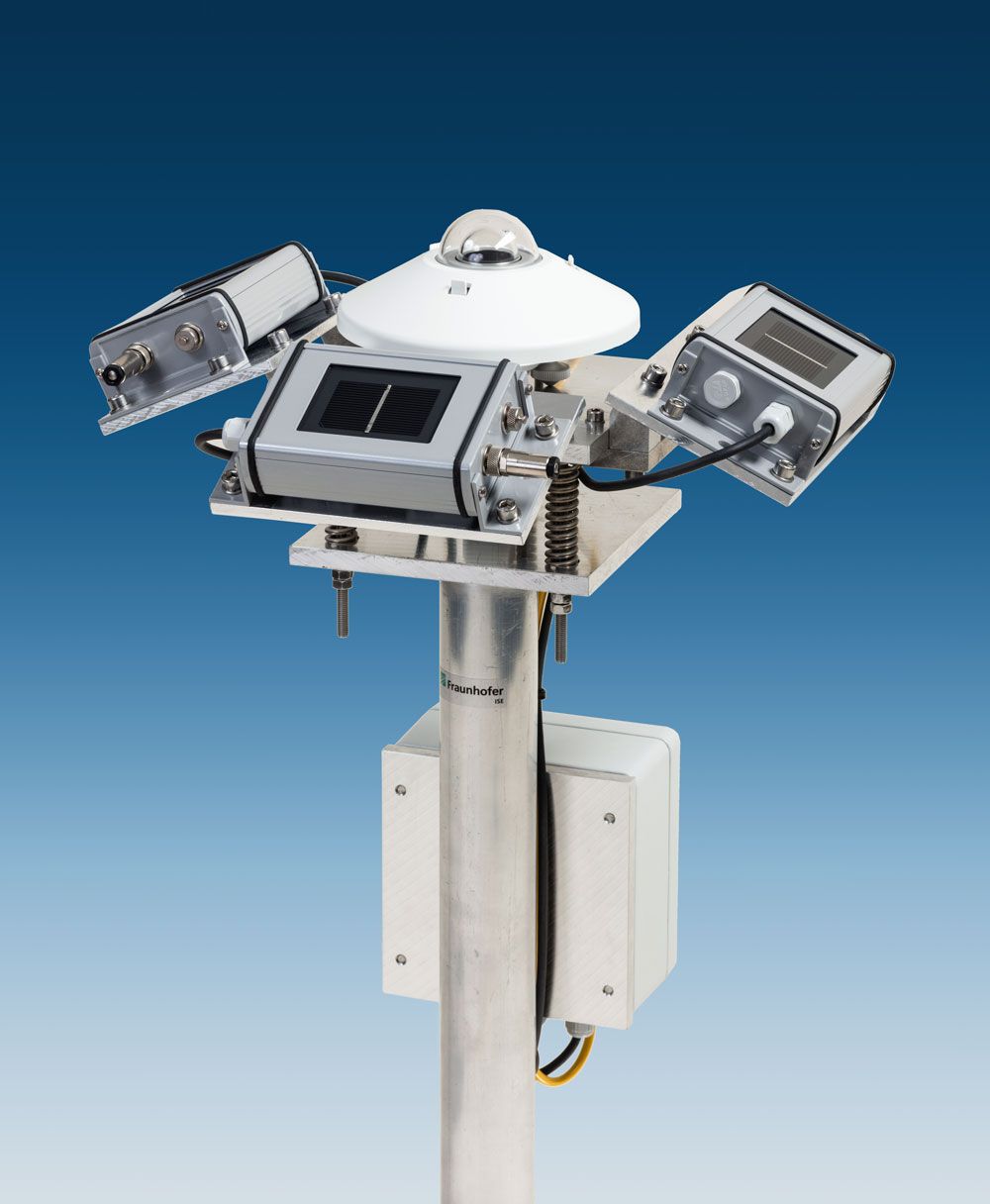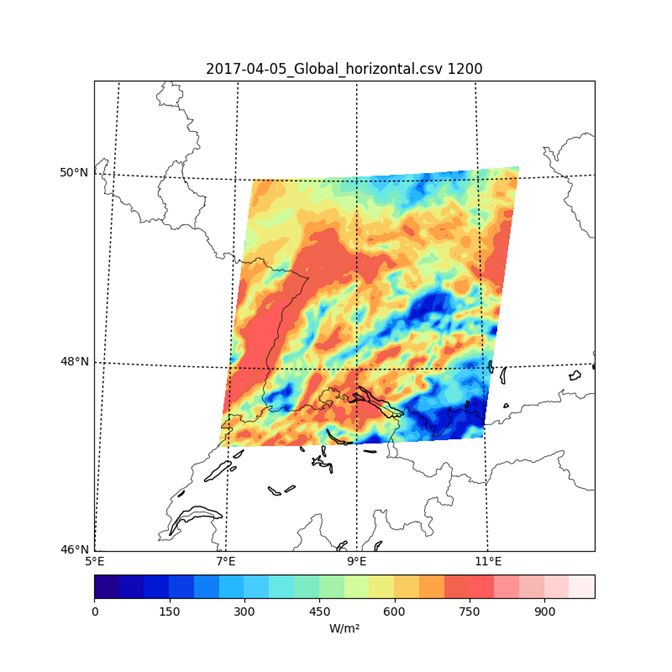| Duration: | September 2016 - Dezember 2019 |
| Contracting Authority/ Sponsors: | Transnet BW GmbH |
| Project Focus: |
PV-Live – Operational Delivery of Solar Irradiance and Simulated Photovoltaic Power Data to Transnet BW


How much PV power is fed into our electricity grid where and when? In order to maintain grid stability and for marketing of solar power at the electricity market, this question is becoming increasingly important with growing shares of PV power. The assessment of the actual PV power generation in the control area of transmission system operators is an important basis for reliable PV power forecasts. To this end, TransnetBW and Fraunhofer ISE are implementing a PV monitoring network in the control area of TransnetBW. Measurement stations, especially developed for this project, are distributed across the control area in order to transfer current measurements of solar irradiance to the PV power upscaling systems of TransnetBW every minute in real time. In combination with satellite-based irradiance values, current PV generation and the resulting feed-in can be described with a high spatial and temporal resolution.
The measurement stations are optimized for the requirements of PV power upscaling. Pyranometers are employed to measure global horizontal irradiance and silicon sensors to measure irradiance on tilted surfaces with different slopes as a basis for simulated PV power values. The first 19 measurement stations are in operation since summer 2017 and have been sending data in real time since. The installation of 21 additional measurement stations is planned for early 2018. The distance between neighbouring stations in the completed network will range from 15 to 35 km.
The measurements are complemented with satellite-based solar irradiation maps, provided by Fraunhofer ISE for the entire control area in a 4-km grid every fifteen minutes since mid-2017. The satellite-based irradiance values are continuously evaluated in comparison to the measured irradiances. Overall, they show a good agreement. The combination of ground measurements and satellite data enables new approaches of PV power upscaling with the aim to significantly improve existing approaches.